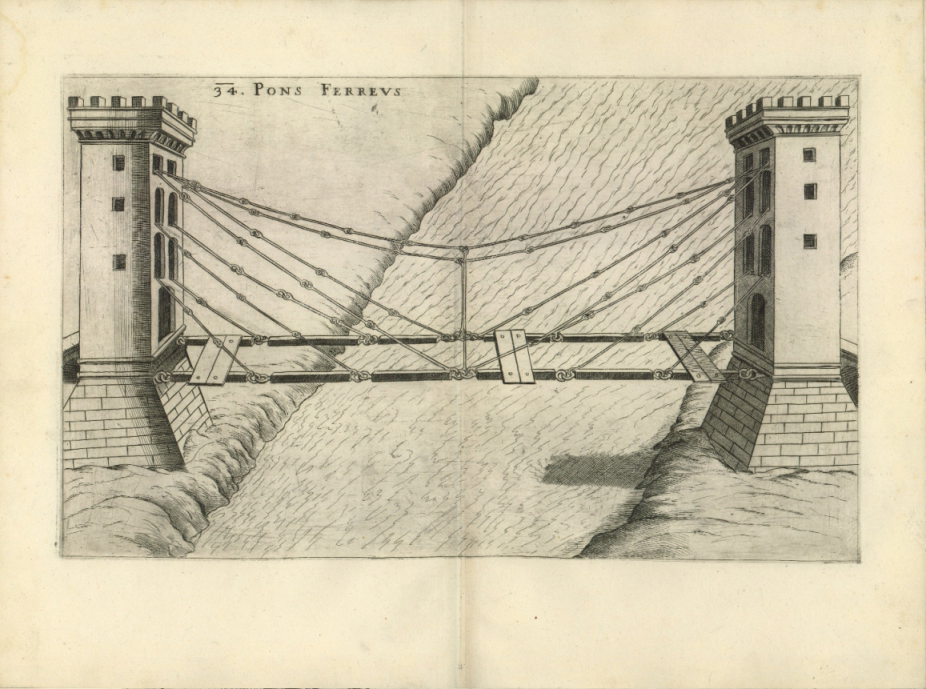Machinae novae (Venice, 1615/1616) is one of the most prominent works in the field of European technical literature at the turn of the 16th to the 17th century. In certain projects present there, Vrančić as a visionary anticipates further technical development. Machinae novae contains 49 different large-format images. They are followed by comments in Latin, Italian, Spanish, French and German, describing 56 different devices and technical constructions. All these projects were not new, but many originally were done by Vrančić, and they represented a great enrichment of the then-known technical forms and constructions.
Vrančić points out:
“Many philosophers believe that in architecture the most important art relates to machines, as they have to be created with more reason. But if art and machine knowledge are so high-priced and since ancient times they have been gaining their momentum and application, how much greater glory they would have to achieve when they brought so many new things after many hundreds of years. Yet I know people are such that many – after having seen these my machines or instruments, and even before they have seen them and having just read about them in a catalog and highly evaluated them – will despise them and consider them as ordinary things. Why did I then invest so much effort to describe them?
Precisely because I wanted to satisfy myself, and also the few ones, who will somewhat appreciate those. I pray that others, as they can, will bring better to the light of day or will further invent, so that these machines can be abandoned, and others can be applied” (translated into Croatian by V. Muljević).
Among the numerous valuable projects done by Vrančić, including mills, bridges and various devices, the first in the history of the technique are his ideas of cable car, shock absorber, metal bridge, as well as chain bridge, while the project of the homo volans (the flying man), the first construction of a modern parachute, brought him the world glory. Although before Vrančić other authors including Leonardo da Vinci had been dealing with the idea of such a device, he was the first to present a construction containing all the elements of a modern parachute which allows safe descent from a high altitude. Vrančić, like other inventors at that time, could not solve all the problems he was dealing with, but he interpreted and described them phenomenologically. Mathematical, physical and technical knowledge was required to solve these problems but it will be in use only after the 18th century and later on. However, although the far-sighted projects Vrančić designed outperformed the possibilities available to him, they show how far he was ahead of his time.
Many Vrančić’s ideas survived in practice for over a century after they were printed in Machinae novae, and some of his remarkable ideas are used all over the world today, four centuries after the publication.

